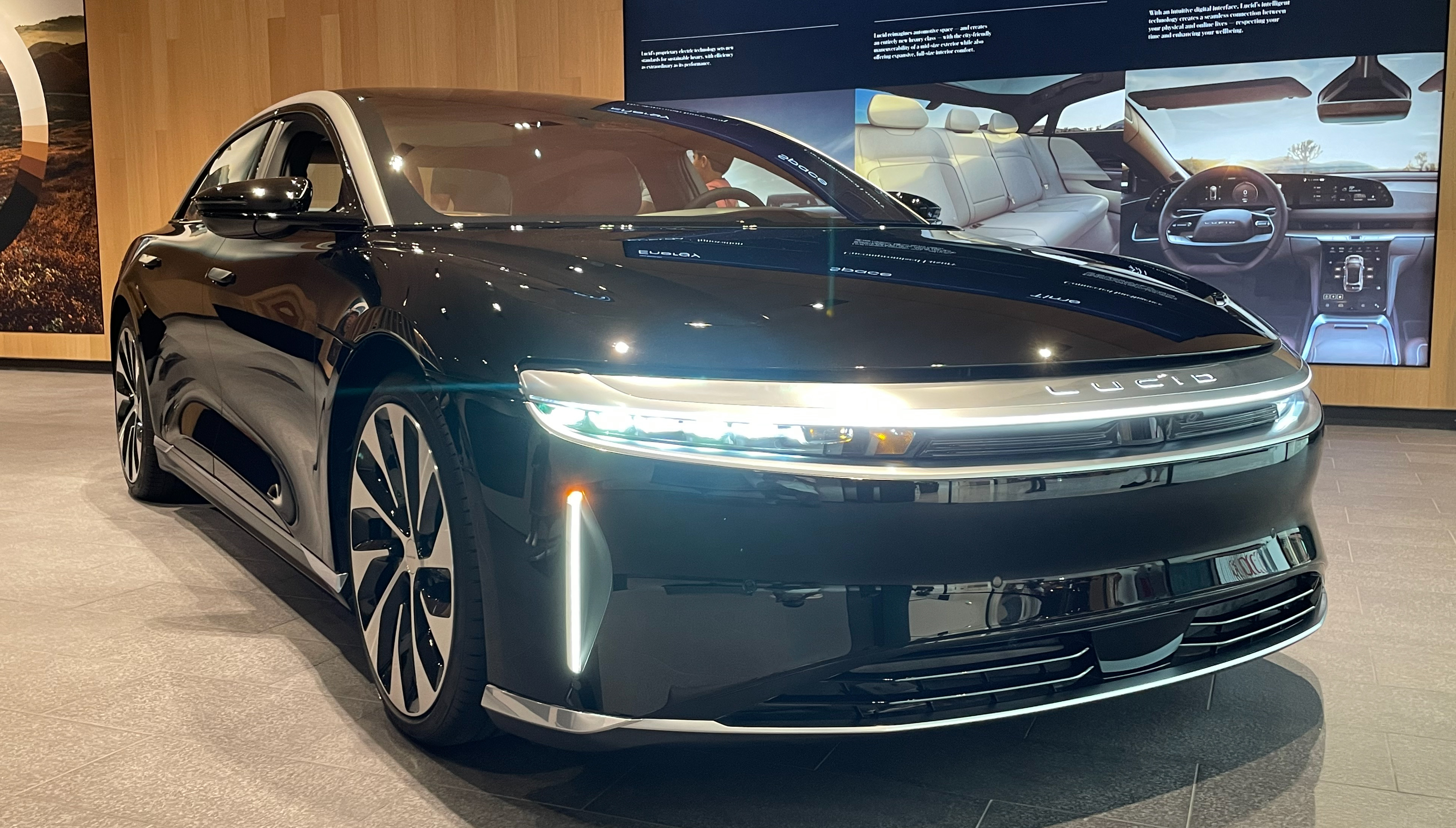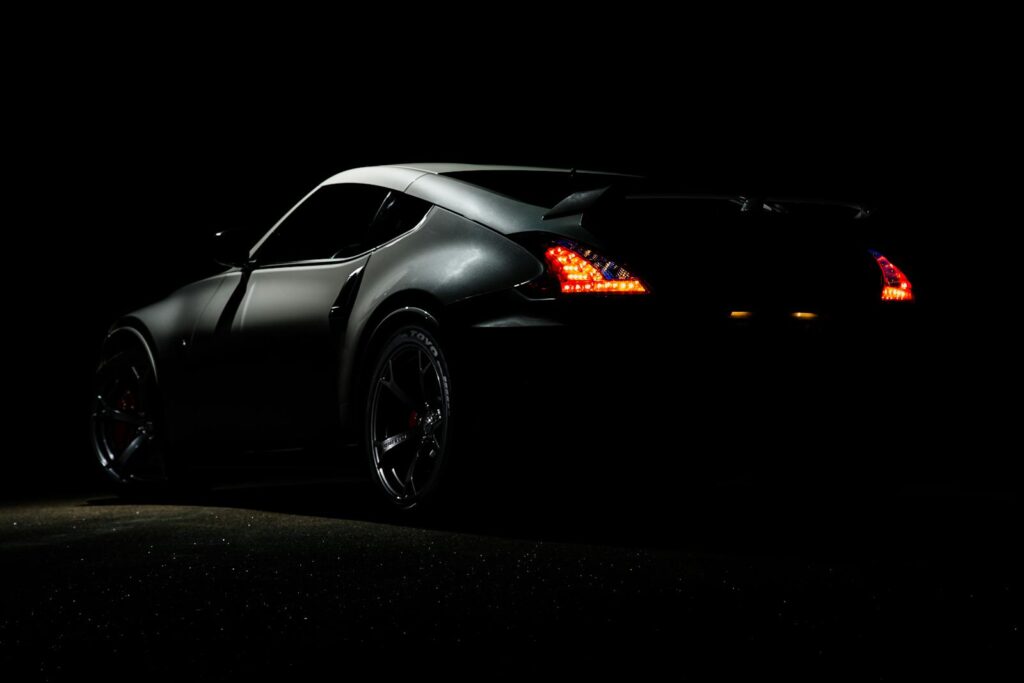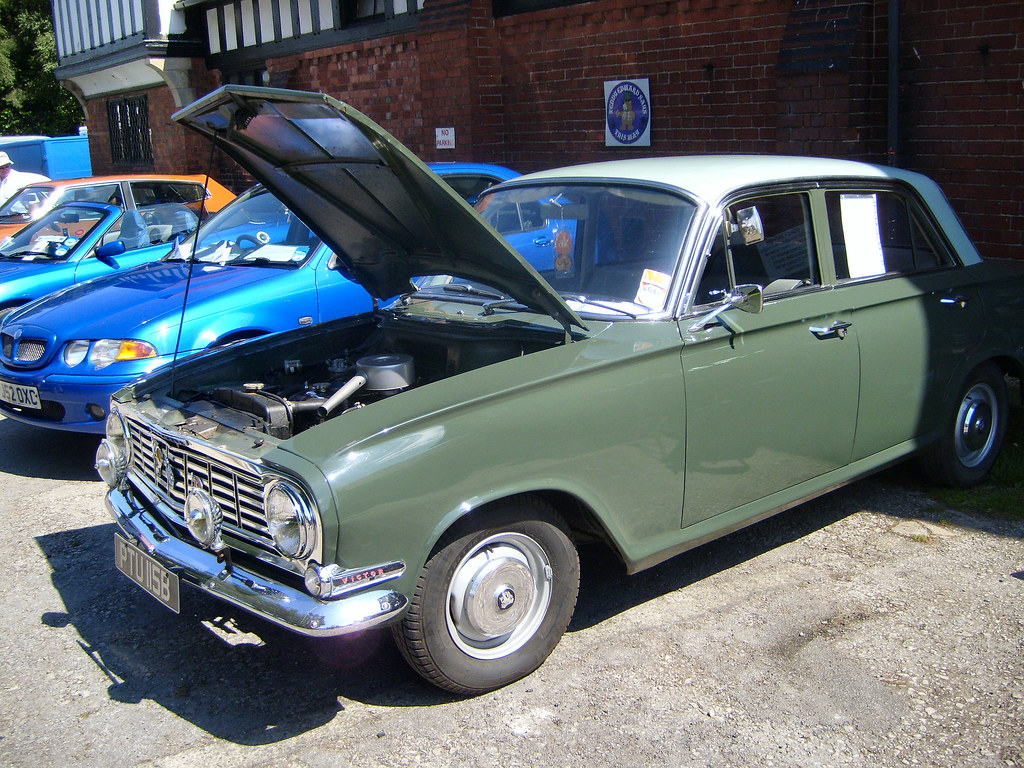
The Fourth of July resonates far beyond mere independence; it stands as a vibrant testament to American ingenuity, the unyielding freedom to challenge convention, and the relentless spirit of innovation that has consistently propelled the nation forward. This inventive drive is perhaps nowhere more profoundly exemplified than in America’s enduring and passionate love affair with the automobile. For over a century, the U.S. has persevered, thrived, and profoundly shaped the global automotive landscape, from pioneering the moving assembly line to popularizing the utilitarian off-roader with the WWII Jeep, building legendary V8s, and pushing electric vehicles into the mainstream. This saga is deeply woven into the fabric of American achievement, reflecting a ceaseless pursuit of excellence and groundbreaking solutions.
While the thrumming power of muscle cars and the rugged utility of pickups undeniably form the very core of American car culture, the nation’s pivotal role in developing sophisticated mid-engined performance machines is an equally rich and vital part of this heritage. All three of Detroit’s legendary Big Three—Ford, General Motors, and Chrysler—have, at various points, boldly explored this technically advanced format. One cannot forget Henry Ford II’s famous greenlighting of the GT40 project in the 1960s, a monumental endeavor designed to conquer Ferrari at Le Mans, leading to one of motorsport’s most iconic triumphs and firmly placing American mid-engined engineering on the world stage. Around that same transformative era, GM’s visionary Zora Arkus-Duntov was tirelessly waging his personal campaign for a mid-engined Corvette, meticulously producing a string of radical prototypes that patiently paved the way for the groundbreaking C8 in 2020. These were the wild concepts that defied the status quo, and while many never made it to production, they pushed the very limits of engineering and profoundly reimagined what American performance truly could be. Join us as we explore 10 such groundbreaking, yet often ‘shelved,’ American mid-engined masterpieces that challenged the conventional.

1. **1968 Chevrolet Astro II**Unveiled to an eager public at the prestigious 1968 New York Auto Show, the Chevrolet Astro II represented an audacious and forward-thinking attempt by the automotive giant to completely reimagine the immensely popular Corvette. Its defining characteristic was, of course, the placement of its engine behind the driver, a radical departure from the traditional front-engined layout that had defined America’s sports car for years. Internally designated as XP-880, this sleek fastback concept immediately captured attention with its striking aesthetics and innovative engineering, signaling a potential shift for GM’s performance lineup.
At its heart, the Astro II packed a formidable 427-cubic-inch big-block V8, an engine choice that underscored its serious performance intentions. What made this concept truly remarkable was not just its mid-engine configuration, but the conviction of GM engineers who genuinely believed this layout was not only radical but also entirely feasible for production. They envisioned a future where the Corvette could embrace exotic performance without sacrificing its quintessential American identity, a vision that was far ahead of its time for mainstream domestic manufacturers.
The concept’s exterior was equally revolutionary, featuring advanced aluminum bodywork and flowing, aerodynamic proportions that hinted strongly at a more exotic and high-performance version of the Corvette. It was a clear statement that GM was capable of designing vehicles that could rival the most sophisticated European sports cars in terms of both style and performance. The commitment to lightweight materials and advanced design showcased a forward-thinking approach that promised a new era of American sports car development.
However, despite its visionary design and engineering promise, the prevailing forces of tradition and conservative decision-making ultimately won out within GM. The project was, rather quietly, shelved, denying enthusiasts a glimpse of what could have been a revolutionary production vehicle. Still, the Astro II lit an undeniable spark that refused to die. A vision that would linger on for decades, that dream would finally be realized over half a century later with the groundbreaking introduction of the mid-engined C8 Corvette in 2020, cementing the Astro II’s legacy as a pioneering spirit in American performance car development.
Car Model Information: 2023 Toyota Camry LE
Name: Chevrolet Astro/GMC Safari
Manufacturer: General Motors
Production: 1985–2005
Class: Van
Platform: M-body (RWD) / L-body (AWD)
Layout: Front-engine, rear-wheel-drive layout,Rear-wheel drive
Aka: GMC Safari
BodyStyle: 3-door cargo van,3-door passenger van
Transmission: Automatic transmission
Assembly: Baltimore Assembly,Baltimore, Maryland
Successor: Chevrolet City Express,Chevrolet Uplander
Caption: 1994 Chevrolet Astro EXT
Categories: 1990s cars, 2000s cars, All-wheel-drive vehicles, All articles needing additional references, All articles with dead external links
Summary: The Chevrolet Astro is a minivan that was manufactured and marketed by the Chevrolet division of American auto manufacturer General Motors from 1985 to 2005. Sold alongside the GMC Safari, the Astro was marketed in multiple configurations, including passenger van and cargo van.
The Astro and Safari used a rear-wheel-drive chassis; all-wheel drive became an option in 1990. For its entire production, the Astro and Safari were produced by Baltimore Assembly in Baltimore, Maryland; the vans would be the final model line produced by the facility. In total, approximately 3.2 million Astros and Safaris were produced from 1985 through 2005.
Get more information about: Chevrolet Astro
Buying a high-performing used car >>>
Brand: Chevrolet Model: Astro II
Price: $25,600 Mileage: 23,699 mi.
Read more about: The Malaise-Era Missteps: Unearthing the Worst Classic Car Accessories of the 1970s
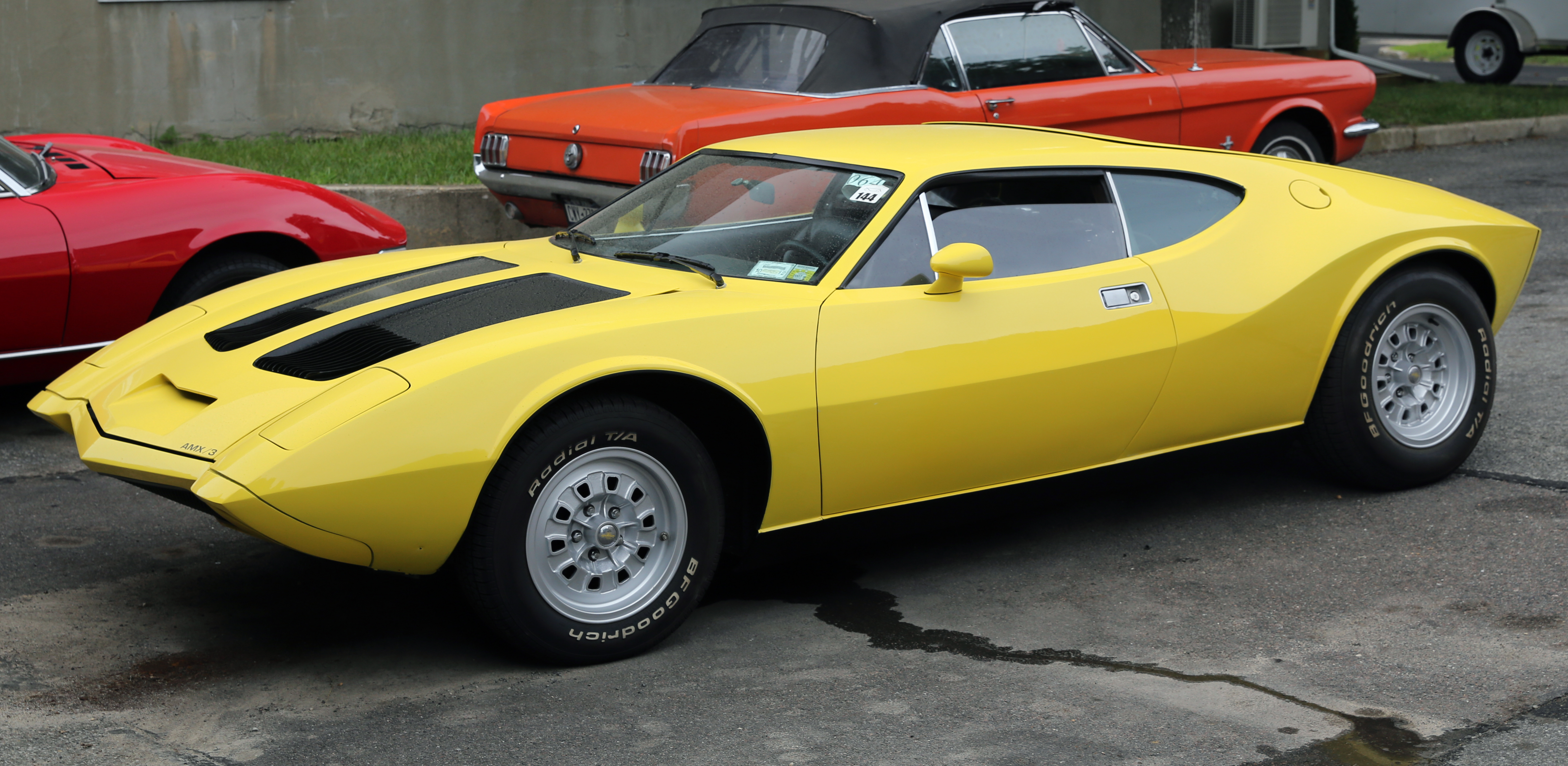
2. **1970 AMC AMX/3**In the late 1960s, American Motors Corporation (AMC), often perceived as one of the more unconventional and daring American performance carmakers, harbored its own ambitious mid-engine aspirations. The result of this bold vision was the AMX/3, a stunning machine that masterfully fused raw American muscle with the sophisticated elegance of European design. This unique synthesis was no accident, as the car was penned by the legendary designer Dick Teague and meticulously engineered in Italy by the ex-Ferrari maestro, Giotto Bizzarrini, a dream team promising automotive brilliance.
Beneath its exquisitely sculpted steel skin, the AMX/3 concealed a powerful 390-cubic-inch AMC V8 engine. This American heart produced an impressive 340 horsepower, a significant figure for its era, ensuring that the car had the outright performance to match its exotic looks. The collaboration between American power and Italian finesse was evident in every detail, creating a vehicle that was both aesthetically pleasing and dynamically capable, a true testament to cross-continental automotive ingenuity and engineering ambition.
The AMX/3’s sleek lines and low profile were designed to evoke a sense of speed and agility, making it stand out even among the increasingly performance-oriented cars of the late 60s and early 70s. Its European engineering roots provided a level of refinement and handling dynamics not commonly found in American muscle cars, positioning it as a serious contender in the burgeoning mid-engine sports car market, had it been given the chance to flourish.
Unfortunately, the journey of the AMX/3 was short-lived. Only five road-ready prototypes were ever meticulously built, each a rare gem. The ambitious project was ultimately brought to an abrupt halt by a confluence of rising production costs and the ominous shadow of impending, stringent safety regulations. These factors, common nemeses of many visionary automotive projects, proved insurmountable for AMC at the time, preventing the AMX/3 from ever reaching full production and leaving enthusiasts to ponder what could have been. In another timeline, this truly was Detroit’s Pantera; only purer, rarer, and arguably even more beautiful.
Read more about: Recall These? The Ultimate Showdown: 12 Coupes That Went From Hot to Humiliating in the Great American vs. European Car Wars

3. **1976 Chevrolet Aerovette**By the mid-1970s, General Motors’ persistent and in-depth exploration of mid-engine Corvette concepts had evolved into something tantalizingly close to a production-ready vehicle. This culmination of years of meticulous development manifested as the Aerovette: a breathtaking gull-wing vision meticulously built around a mid-mounted V8 engine, signaling a clear intent for a radical transformation of the Corvette’s identity.
The Aerovette itself was not a sudden creation but a progression, having evolved through earlier experimental prototypes known as the XP-882 in 1969 and subsequently the XP-895 in 1972. Each iteration brought it closer to reality and refined its ambitious design. Interestingly, the Aerovette initially derived its power from a rotary engine, a technology that was experiencing considerable hype in the automotive world at the time. However, in a pragmatic shift that emphasized more conventional American power, the concept was eventually retrofitted with a potent 6.6-liter, or 400 cubic-inch, small-block V8 engine, ensuring robust power delivery aligned with GM’s performance heritage.
Beyond its undeniably dramatic mid-engine layout and striking fighter-jet aesthetics, the Aerovette was a veritable showcase of advanced automotive engineering. It featured sophisticated aluminum body panels, contributing significantly to its lightweight construction and enhanced performance capabilities. A lightweight backbone chassis provided the structural integrity, optimizing both rigidity and dynamic responsiveness for a truly exhilarating driving experience. Furthermore, the Aerovette boasted one of GM’s earliest and most significant uses of wind tunnel testing for aerodynamic refinement, demonstrating a profound commitment to cutting-edge performance science.
Many automotive historians and enthusiasts contend that this was, arguably, the closest the Corvette ever came to adopting a mid-engine configuration before the eventual arrival of the C8, almost fifty years later. Remarkably, GM even went so far as to approve a production version of the Aerovette, a clear indication of its potential and the company’s confidence in the design. Yet, in a recurring theme for such visionary projects, “cold feet” and a prevailing sense of corporate conservatism ultimately won out, consigning the Aerovette to the annals of highly influential, yet unrealized, American automotive dreams, a testament to what might have been.

4. **1986 Corvette Indy Concept**Even as the C4-era of the Chevrolet Corvette was firmly underway by the mid-1980s, General Motors’ ambitious mid-ship dreams for its iconic sports car were far from extinguished. Indeed, rather than being abandoned, these aspirations were reinvigorated, picking up precisely where the groundbreaking Aerovette had left off. The tangible result of this renewed fervor was the stunning Corvette Indy Concept, a dramatic and technologically advanced mid-engined vision that debuted with considerable fanfare in 1986, captivating the automotive world with its futuristic appeal.
Beneath its sleek and overtly futuristic carbon-kevlar shell, the Corvette Indy was a true marvel of engineering, packed with an array of cutting-edge technologies that pushed the boundaries of automotive design. Its power plant was a twin-turbo V8 engine, directly derived from the fiercely competitive world of IndyCar racing, promising blistering performance that matched its exotic looks. This high-performance engine was a clear statement of intent, showcasing GM’s ability to transfer racing technology to concept vehicles.
But the technological prowess didn’t stop there; the concept also featured an advanced all-wheel-drive system for unparalleled traction, four-wheel steering for exceptional agility, and a sophisticated active suspension that could dynamically adapt to varying road conditions, ensuring optimal handling and ride quality. The structural foundation of this technological tour de force was a composite backbone chassis, a testament to lightweight yet immensely strong construction. Even the vehicle’s canopy pushed boundaries, wrapped in specialized jet-fighter glass, further emphasizing its high-tech, aerospace-inspired design ethos, making it appear ready for takeoff.
In a strategic move to leverage external expertise, Lotus, a legendary British automotive engineering firm that had been recently acquired by GM at the time, provided crucial assistance with the chassis development, lending its renowned handling acumen to the project. Though the Corvette Indy was never destined for production and the open road, it served a vital role as a dynamic, rolling testbed. It laid crucial groundwork for subsequent high-performance GM projects, notably the CERV III, and its advanced design previewed numerous stylistic and technological cues that would eventually trickle down into production Corvettes in the decade to come, powerfully reflecting GM’s unyielding ambition to reassert its technological dominance on the global automotive stage.
Car Model Information: 2023 Toyota Camry LE
Categories: Articles with short description, Chevrolet vehicles, Lists of cars, Lists of vehicles by manufacturer, Pages using multiple image with auto scaled images
Summary: Chevrolet is a division of the manufacturer General Motors (GM), which produces vehicles since 1911 worldwide.
Get more information about: List of Chevrolet vehicles
Buying a high-performing used car >>>
Brand: Chevrolet Model: Corvette Indy Concept
Price: $25,600 Mileage: 23,699 mi.
Read more about: Remember These? 14 Classic Cars From the 1980s That Everyone Forgot About
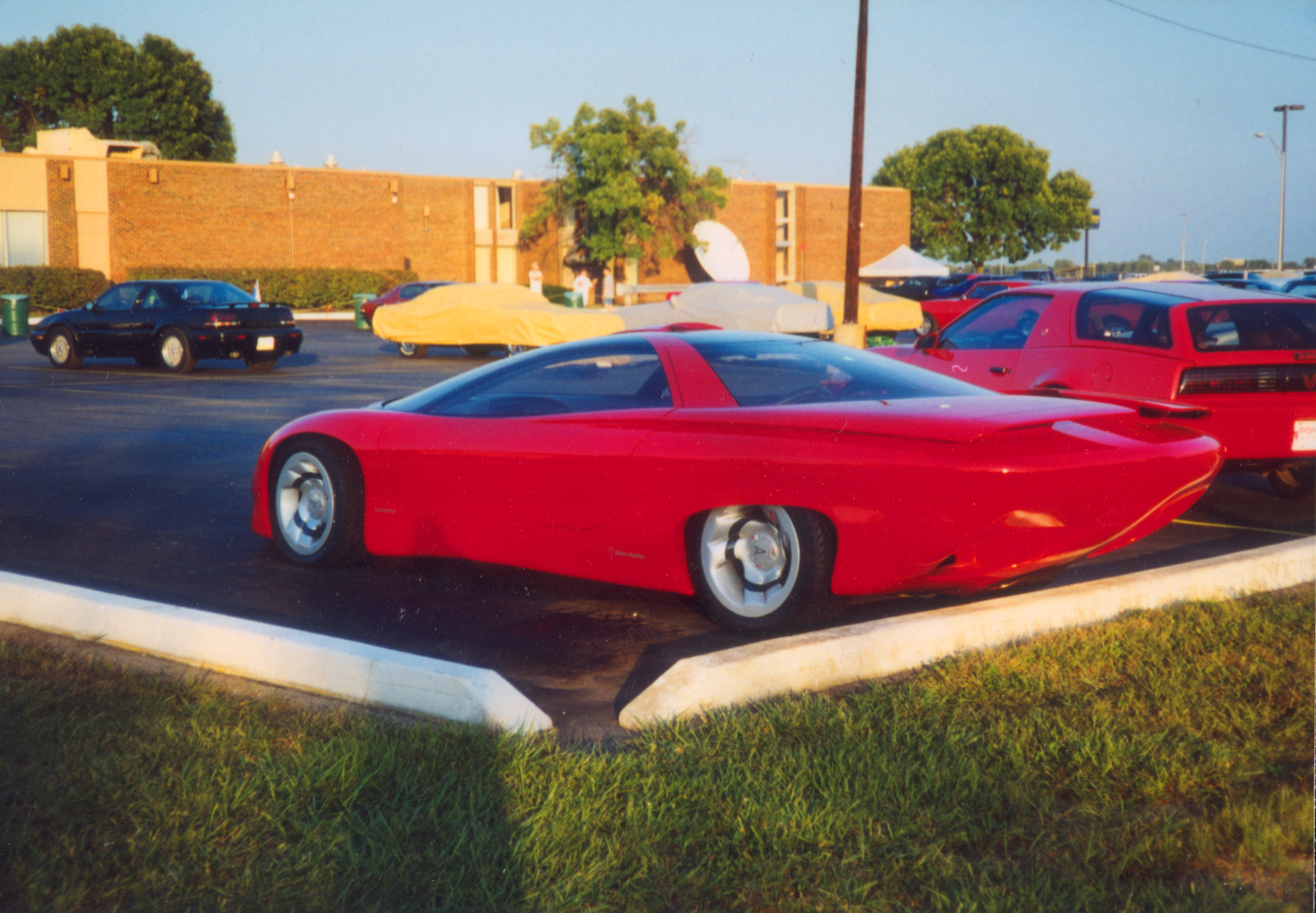
5. **1988 Pontiac Banshee IV**Just two short years after the unveiling of the groundbreaking Corvette Indy Concept, Pontiac’s innovative design studios unleashed their own vision of the future: the striking Banshee IV. This concept was a futuristic, sci-fi-inspired wedge that seemed to have warped directly from a distant future, its aggressive lines and low-slung profile making an immediate, unforgettable impression. It was a bold statement from a brand known for its performance cars, pushing the boundaries of what a Pontiac could truly be, far beyond its current production lineup.
Underneath its radical exterior, the Banshee IV ingeniously shared foundational DNA with the contemporary C4 Corvette, providing a robust and proven platform for its ambitious design. However, the design itself was unequivocally theatrical and pushed aesthetic limits, boasting features that screamed innovation and excitement. Pop-up headlights, a hallmark of 80s sports car design, were present, alongside retractable spoilers that hinted at active aerodynamics, and a dramatic glass canopy that enveloped the cockpit, blurring the lines between car and fighter jet, giving it an otherworldly presence.
The interior of the Banshee IV was equally forward-thinking, embodying the peak of 1980s futuristic design and luxury. Digital gauges provided vital information in a sleek, modern display, while the ergonomics were clearly inspired by fighter-jet cockpits, creating an immersive and driver-focused environment. This interior was a clear declaration of intent, signaling a departure from traditional automotive cabins towards a more integrated, high-tech driving experience that would have felt revolutionary and set new benchmarks for automotive interiors.
Rumors even began swirling that the Banshee IV, with its advanced design and potent performance potential, could eventually replace the beloved Corvette entirely, a testament to its radical appeal and the impact it made. Ultimately, however, the Banshee proved to be simply too advanced, too bold, and perhaps too much of a perceived threat to the established crown jewel that was the Corvette. While it never progressed beyond the concept stage, the Banshee IV left an indelible mark, leaving behind a clear trail of design influence that future Pontiac models would quietly, yet significantly, embrace, ensuring its legacy endured.
America’s mid-engined aspirations, as we’ve seen, ignited a fierce passion within Detroit’s Big Three and beyond, leading to a spectacular array of concepts that redefined what was possible. As we continue our journey through these visionary machines, we move into later decades, witnessing how designers and engineers embraced even more radical technologies and extreme performance metrics, constantly challenging the established order. These next entries showcase a relentless pursuit of speed, innovation, and an unapologetically American approach to exotic car design, even when faced with insurmountable hurdles.
Car Model Information: 2023 Toyota Camry LE
Name: Pontiac Banshee
Manufacturer: General Motors
Production: 1964–1968 (I–II),1974 (III),1988 (IV)
Engine: cvt
Wheelbase: cvt
Length: cvt
Width: cvt
Height: cvt
Weight: cvt
Predecessor: Pontiac Club de Mer
Successor: Pontiac Rageous
Sp: us
Categories: All articles with unsourced statements, Articles with short description, Articles with unsourced statements from June 2020, CS1 maint: location missing publisher, Cars discontinued in 1988
Summary: The Pontiac Banshee is a line of concept cars designed by Pontiac, assuming the role previously established by General Motors’ Firebirds of the 1950s. Four Banshee “dream cars” were fabricated through 1988 as design exercises intended to establish exterior and interior themes that could be modified for production versions of Pontiac sports and performance cars. Banshee was also the leading candidate for Pontiac’s version of the Camaro before being named Firebird in light of any deathly associations of the word Banshee.
Get more information about: Pontiac Banshee
Buying a high-performing used car >>>
Brand: Pontiac Model: Banshee IV
Price: $25,600 Mileage: 23,699 mi.
Read more about: Grab Life by the Wheel: The 10 Most Jaw-Dropping Steering Wheels Ever Made
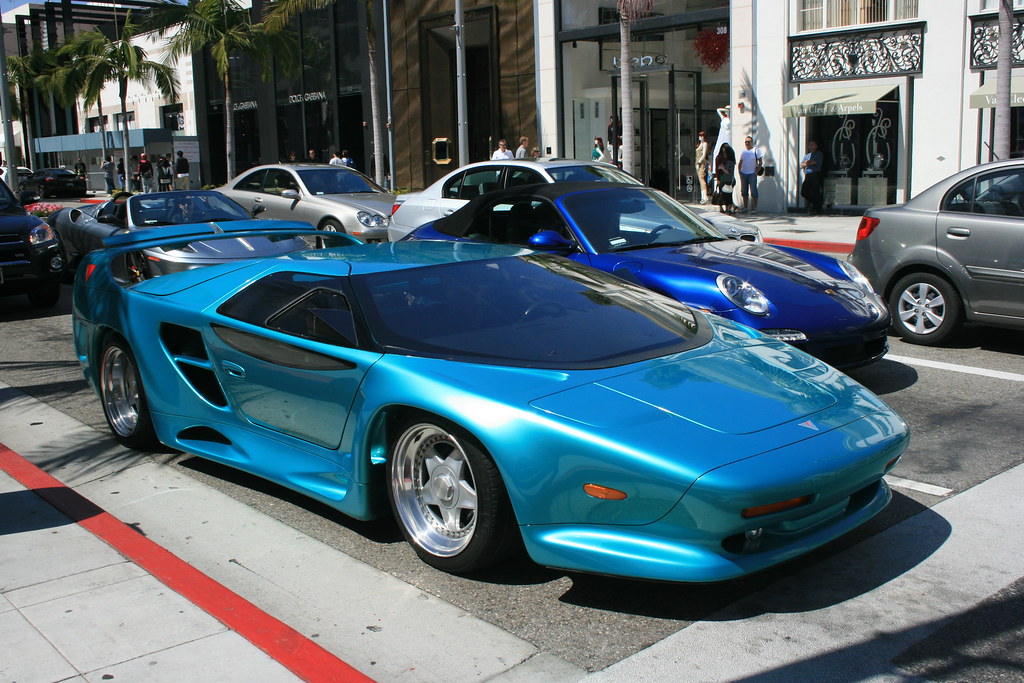
6. **1990s–2000s Vector WX-3 / WX-8**When we consider American manufacturers with the audacious potential to truly challenge Europe’s long-standing dominance in the exotic car world through the late 1980s and into the early 1990s, Vector unequivocally stands at the very top of that list. Under the leadership of the irrepressible Jerry Wiegert, this California-based outfit had already made a significant impact with its W8 model, produced from 1989 to 1993, which captivated headlines with its angular, aerospace-inspired design and formidable twin-turbo V8 powertrain. The W8 laid a robust foundation for even more ambitious endeavors, firmly establishing Vector as a serious player in the high-performance arena.
Building on this success, Vector’s subsequent concepts, the WX-3 and later the WX-8, truly aimed for an even higher echelon of automotive engineering and performance. These machines were not merely evolutions; they were radical statements of intent. With projected output figures soaring north of 1,000 horsepower, they promised a level of propulsion that would push the very boundaries of the era’s hypercars. This immense power was paired with cutting-edge construction, utilizing military-grade materials throughout their chassis and bodywork, ensuring both extreme rigidity and remarkably low weight.
The interior environments of these Vector concepts were equally revolutionary, resembling the cockpit of a fighter jet more than a traditional grand tourer. Advanced instrumentation, ergonomically focused controls, and a sense of being entirely enveloped in a purpose-built driving machine underscored their outrageous and defiantly American character. Every detail, from the materials chosen to the layout of the controls, spoke to a philosophy that prioritized unadulterated performance and a unique, tech-forward aesthetic.
However, despite their groundbreaking specifications and visionary design, neither the WX-3 nor the WX-8 ever progressed beyond the prototype stage. They represented a bold vision of performance that consciously chose not to follow established European rules but rather sought to rewrite them entirely. The Vector WX-3 and WX-8 remain compelling examples of American ambition, showcasing an independent spirit that dared to dream bigger and faster than almost anyone else, leaving a powerful, albeit unfulfilled, legacy in the annals of automotive history.

7. **1995 Ford GT90**In the mid-1990s, Ford made a resounding statement with the unveiling of the GT90, a car that served as a profound spiritual successor to the legendary GT40 of the 1960s. This concept was much more than a mere tribute; it was a powerful symbol of Ford’s technical prowess and an ambitious answer to the dominant Ferrari machines of its own era. Its radical, “New Edge” design, characterized by sharp angles and interconnected geometric forms, was a bold stylistic departure that instantly captivated the automotive world and set a new benchmark for concept car aesthetics.
At the core of the GT90’s formidable performance was a quad-turbocharged 6.0-liter V12 engine, an engineering masterpiece specifically crafted by fusing two modular V8s. This unique powertrain churned out an astonishing 720 horsepower, propelling the GT90 into the hypercar territory of its time. Such immense power demanded an equally sophisticated platform, and Ford ingeniously built the concept atop a robust chassis derived from the Jaguar XJ220, a testament to both its advanced engineering and its global component sourcing strategy within the Ford empire.
Beyond its raw power, the GT90 was a veritable showcase of advanced automotive technology. It featured active aerodynamics, allowing the car to dynamically adjust its downforce and reduce drag for optimal performance at blistering speeds. Inside, a fully digital instrument cluster provided the driver with critical information in a futuristic and highly legible format. Perhaps one of its most unique and visually striking features was the inclusion of white ceramic space-shuttle tiles in the engine bay, an innovative solution designed to manage the extreme heat generated by its quad-turbo V12, highlighting Ford’s commitment to pushing material science.
The Ford GT90 absolutely stole the show at the 1995 Detroit Auto Show, garnering immense praise and solidifying its place as one of the most iconic American concept cars of the era. While it was never destined for production, the GT90’s impact transcended the need for a showroom. It powerfully demonstrated Ford’s ability to design, engineer, and present a world-class hypercar, pushing boundaries in design, technology, and sheer power, leaving an indelible mark on automotive enthusiasts and designers worldwide.
Read more about: The Road Not Taken: 13 Revolutionary Concept Cars That Refused to Hit Production

8. **2002 Cadillac Cien**In 2002, to commemorate its centennial, Cadillac presented the Cien, a concept car that boldly re-imagined the luxury brand’s identity and capabilities. Unveiled at the Detroit Auto Show, the Cien seamlessly combined stealth-fighter geometry with a commanding 7.5-liter Northstar V12 engine. This powerhouse was engineered to produce an impressive 750 horsepower, a figure that positioned Cadillac squarely in the realm of high-performance supercars and hinted at a thrilling new direction for a brand traditionally renowned for its opulent luxury vehicles.
The Cien represented GM’s most audacious attempt to redefine American luxury performance, pushing Cadillac into uncharted territory with features typically reserved for European exotics. Its construction included a lightweight carbon fiber monocoque, ensuring exceptional rigidity and dynamic handling characteristics. Active aerodynamic elements worked in concert with the car’s sculpted form to optimize airflow and stability at high speeds. Furthermore, the dramatic inclusion of scissor doors, a hallmark of ultimate supercar design, underscored the Cien’s aspirational status and bold, future-forward vision.
This concept was arguably the closest Cadillac has ever come to building a true supercar for the road, demonstrating a profound commitment to blending cutting-edge performance with the brand’s signature luxury. The Cien was a stunning declaration that Cadillac could compete at the highest echelons of automotive engineering and design, far beyond its traditional segment.
However, like many visionary projects, the Cien’s journey to production was ultimately thwarted by a combination of high development costs and shifting corporate priorities within General Motors. Yet, the spirit of the Cien lives on, as Cadillac continues to build a strong reputation in the demanding world of motorsports. With its successful Hypercar program and the highly anticipated F1 debut on the horizon next year, it appears things are truly coming full circle for Cadillac, fulfilling the performance legacy the Cien so powerfully hinted at decades ago.
Read more about: From Getaway Cars to Tragic Endings: Unpacking 12 of History’s Most Infamous Automotive Disasters
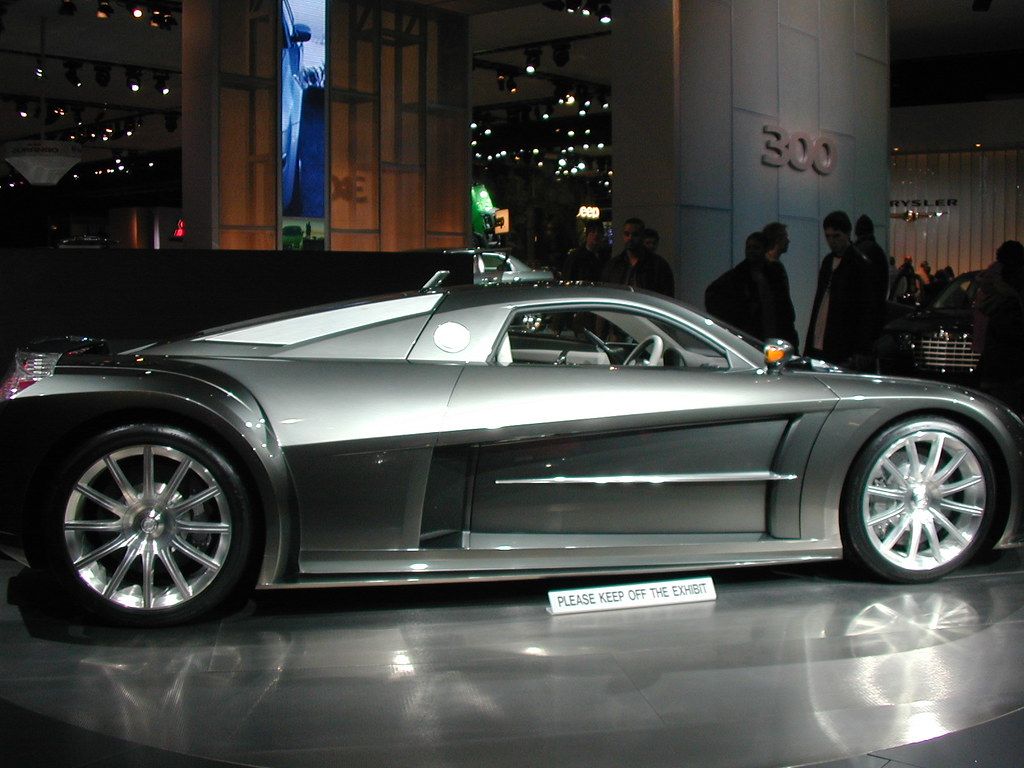
9. **2004 Chrysler ME Four-Twelve**In a moment that truly nobody anticipated, Chrysler unleashed a bombshell at the 2004 Detroit Auto Show: the ME Four-Twelve. This carbon-fiber-bodied monster stunned the automotive world, instantly establishing itself as America’s audacious answer to the legendary McLaren F1. Its name itself, ME Four-Twelve, cleverly hinted at its mid-engine layout, four turbochargers, and twelve cylinders, a direct challenge to the established hypercar hierarchy from an unexpected corner of Detroit.
At the heart of this beastly machine lay an 850-horsepower AMG-sourced V12 engine, a clear indication of its serious performance intentions and a benefit of Chrysler’s partnership with Daimler at the time. This prodigious power, combined with its lightweight construction, projected a blistering 0-60 mph time of under 3.0 seconds, firmly placing it in the elite company of the world’s fastest cars. While Ralph Gilles, then head of design for Chrysler, oversaw the project and was involved in its development, the ME Four-Twelve concept was primarily designed by a talented team led by Freeman Thomas, who brought this incredible vision to life.
What made the ME Four-Twelve particularly astonishing was that, despite being a concept, it possessed fully functional hardware. Chrysler didn’t just showcase a static model; they test-drove it rigorously, benchmarked its performance against leading competitors, and even subtly hinted at its potential for production. Its aggressive lines and purposeful stance made it appear ready to conquer the most demanding circuits of Le Mans, yet its surprisingly refined road manners suggested a duality of purpose.
However, the ambitious project ultimately fell victim to the harsh realities of corporate decision-making. Daimler’s stringent cost-cutting measures, coupled with the sheer financial commitment required to bring such a complex vehicle to market, proved to be insurmountable obstacles. The ME Four-Twelve, despite its overwhelming potential and enthusiast fanfare, sadly faded into legend, becoming one of those tantalizing “what-ifs” in American automotive history, a testament to what might have been had circumstances been different.
Car Model Information: 2023 Toyota Camry LE
Name: Chrysler ME Four-Twelve
Manufacturer: DaimlerChrysler
Aka: Chrysler ME 412
Designer: Brian Nielander
Class: Sports car
BodyStyle: coupé
Layout: MR layout
Engine: Mercedes-Benz M120 engine,V12 engine
Transmission: automatic transmission
Wheelbase: cvt
Length: cvt
Width: cvt
Height: cvt
Weight: cvt
Categories: Articles with short description, Chrysler concept vehicles, Rear mid-engine, rear-wheel-drive vehicles, Short description is different from Wikidata, Sports cars
Summary: The Chrysler ME Four-Twelve is an American high-performance concept car that was engineered, developed and produced by Chrysler in 2004. The ME Four-Twelve name is a combination of the Mid-Engine with Four turbochargers on a Twelve cylinder engine.
Get more information about: Chrysler ME Four-Twelve
Buying a high-performing used car >>>
Brand: Chrysler Model: ME Four-Twelve
Price: $25,600 Mileage: 23,699 mi.
Read more about: 10 Iconic Chrysler Concepts and Classics That Deserve a Comeback
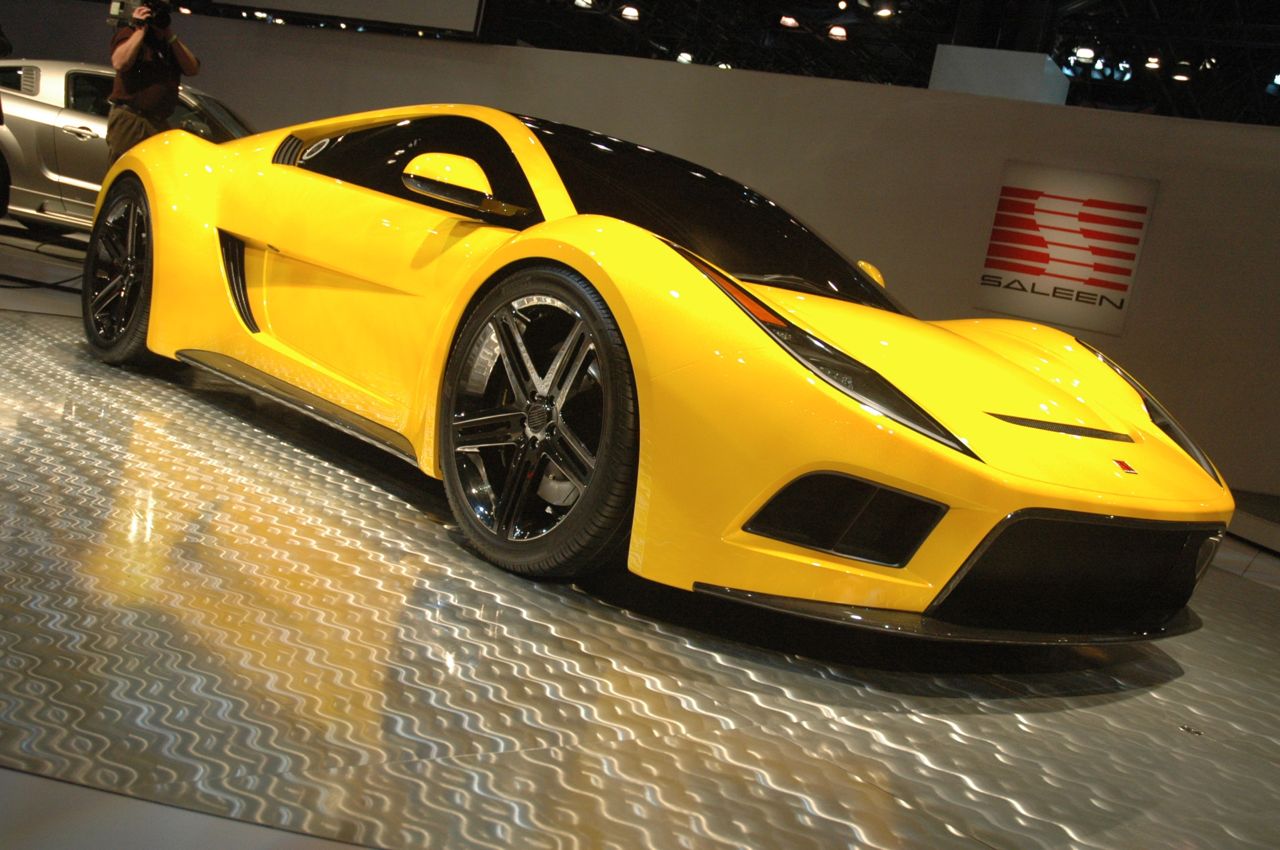
10. **2008 Saleen S5S Raptor**As the global financial crisis loomed large in 2008, Saleen, a boutique American automaker with a history of high-performance vehicles, dared to dream with the unveiling of the S5S Raptor. This sleek, exquisitely sculpted mid-engine exotic promised to be a genuine contender in the supercar market, designed with the audacious goal of undercutting even the formidable Corvette ZR1 while delivering an impressive 650 horsepower from its supercharged V8 engine. It was a beacon of American performance, demonstrating that innovation and ambition were far from extinguished.
The S5S Raptor was not merely a design study; it was engineered by ASC with a clear intent for production and real-world performance on the streets. Saleen even went so far as to quote a prospective price of $185,000, underscoring their confidence in its viability and its competitive positioning against established exotic marques. Its design combined aggressive styling cues with aerodynamic efficiency, making it both visually stunning and functionally capable of exhilarating speeds and handling dynamics.
However, the timing of the S5S Raptor’s introduction proved to be incredibly unfortunate. With credit markets crashing and boutique automakers facing unprecedented struggles to stay afloat amidst the deepening economic downturn, the dream of the Raptor reaching full production was tragically curtailed. Despite its undeniable appeal and technical prowess, the harsh economic realities of the era ensured that the S5S Raptor remained a tantalizing concept, never making it to customer garages.
Nevertheless, the Saleen S5S Raptor spoke volumes about the enduring spirit of American automotive innovation. It was a powerful declaration that even in challenging times, the nation wasn’t done dreaming of speed, beauty, and that classic mid-engine magic. While its road to recovery would eventually come, Saleen’s timing with the S5S wasn’t ideal, but it clearly showed there was still ample room for audacious design and groundbreaking performance, leaving a powerful message of resilience and unyielding passion for automotive excellence.
Car Model Information: 2023 Toyota Camry LE
Name: Saleen S5S Raptor
Manufacturer: Saleen
Designer: ASC Creative Services,Warren, Michigan,Michigan
Class: Sports car
Layout: MR layout
Engine: Supercharger,V8 engine
Transmission: 6-speed manual
Wheelbase: 106.3 in
Abbr: on
Length: 175 in
Width: 78.6 in
Height: 46 in
Sp: us
Categories: Articles with short description, Concept cars, Rear mid-engine, rear-wheel-drive vehicles, Saleen vehicles, Short description is different from Wikidata
Summary: The Saleen S5S Raptor is an American prototype concept car developed and built by American high performance automotive company Saleen. It was first publicly unveiled on March 20, 2008 at the 2008 New York International Auto Show.
The S5S Raptor was designed in 2007 at the ASC design studio in Metro Detroit, and is intended to be equipped with a 5.0 L (310 cu in) supercharged Saleen engine (similar to that used on the 2008 S302E) which will yield 650 hp (659 PS; 485 kW). This will allow it to accelerate to 60 mph (97 km/h) in 3.2 seconds or less and complete the quarter-mile in 10.9 seconds. Expected retail price was US$185,000, roughly US$400,000 less than the S7.
Get more information about: Saleen S5S Raptor
Buying a high-performing used car >>>
Brand: Saleen Model: S5S Raptor
Price: $25,600 Mileage: 23,699 mi.
Read more about: Beyond the Showroom: Unveiling 14 Visionary Vehicle Prototypes That Never Saw Production
These ten American mid-engined concepts, spanning several decades, collectively tell a compelling story of relentless ambition, unparalleled engineering prowess, and an unwavering commitment to pushing automotive boundaries. From Chevrolet’s early Astro II to Saleen’s visionary S5S Raptor, each one represented a bold leap into the unknown, challenging conventional wisdom and daring to imagine a different future for American performance. While many never transitioned from concept to production, their influence is undeniable, having laid crucial groundwork, inspired future designs, and demonstrated that the American spirit of innovation truly knows no bounds. These ‘shelved’ masterpieces remain powerful reminders of what could have been, and perhaps, what still can be, continuing to captivate enthusiasts and engineers alike with their timeless appeal and audacious vision.

